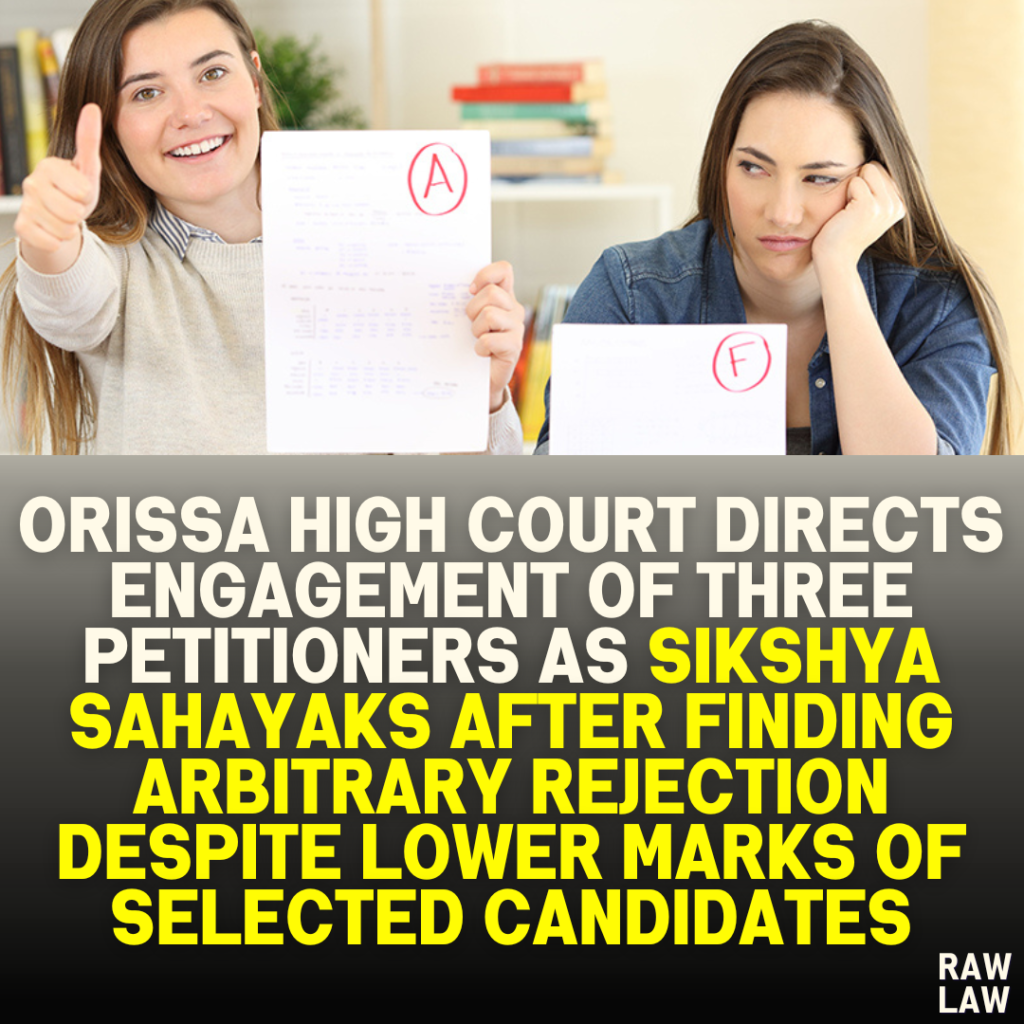Court’s Decision:
The Orissa High Court, in its judgment, partially allowed the writ petition. The court set aside the impugned order concerning three petitioners who had secured more than the cut-off marks for their respective categories. The court directed the authorities to issue engagement orders in their favor, with the engagement being notional from the date their juniors were selected, without any financial benefits. However, the writ petition was dismissed for two petitioners who had secured less than the required cut-off marks.
Facts:
The petitioners applied for Sikshya Sahayak posts in Bhadrak District following an advertisement by the government in 2006. Their names were initially included in the provisional merit list. Subsequently, a guideline was issued, directing selection based on the entire revenue district as a unit. However, a block-wise select list was prepared for Bhadrak. This issue led to a legal challenge, and based on earlier rulings, the petitioners’ applications were scrutinized. They were rejected for securing less than the cut-off marks for their categories, leading them to file the writ petition.
Issues:
The primary issue was whether the petitioners, who secured more than the cut-off marks, were unlawfully denied engagement, while other candidates with lower marks were selected.
Petitioner’s Arguments:
The petitioners argued that their claims were rejected on the basis of them securing less than the cut-off marks. However, they produced evidence obtained under the RTI Act, showing that certain candidates with lower marks than the petitioners were selected. They contended that this amounted to discrimination and illegality.
Respondent’s Arguments:
The State contended that the petitioners were rejected as they had secured marks lower than the cut-off for their respective categories. Additionally, it was argued that the petitioners failed to prove that any candidates with lower marks were engaged, as alleged.
Analysis of the Law:
The court considered the guidelines issued for recruitment and noted that the cut-off marks were a crucial determinant in selecting candidates. However, the court also acknowledged the petitioners’ evidence obtained under the RTI Act, which contradicted the respondents’ claims.
Precedent Analysis:
The court referred to previous rulings, including the Chandramani Jena case, which emphasized that disqualification could not be based on residence and that any qualified person meeting the eligibility criteria was entitled to apply.
Court’s Reasoning:
The court found that the rejection of the petitioners’ claims was not entirely justified, particularly for the three petitioners who secured more than the cut-off marks. The evidence presented under the RTI Act showed that candidates with lower marks were selected, which amounted to an arbitrary rejection of the petitioners’ claims.
Conclusion:
The court allowed the writ petition in part, directing the authorities to issue engagement orders for the three eligible petitioners within two months, while dismissing the petition concerning the other two petitioners who secured less than the cut-off marks.
Implications:
The judgment highlights the importance of fairness and adherence to recruitment guidelines, ensuring that candidates who meet the criteria are not unfairly denied engagement, while also underscoring the value of transparency through RTI information in legal disputes.



